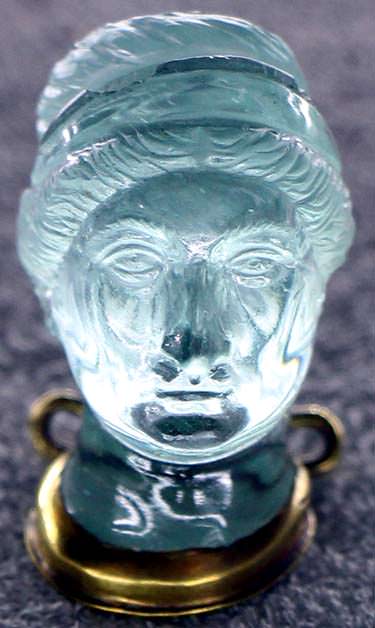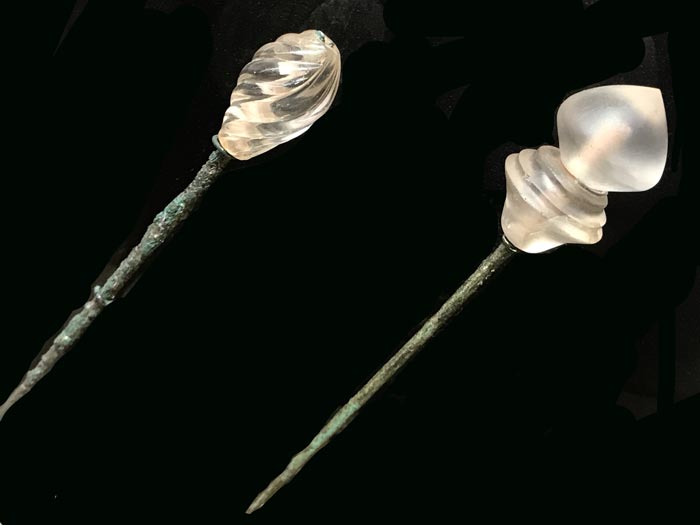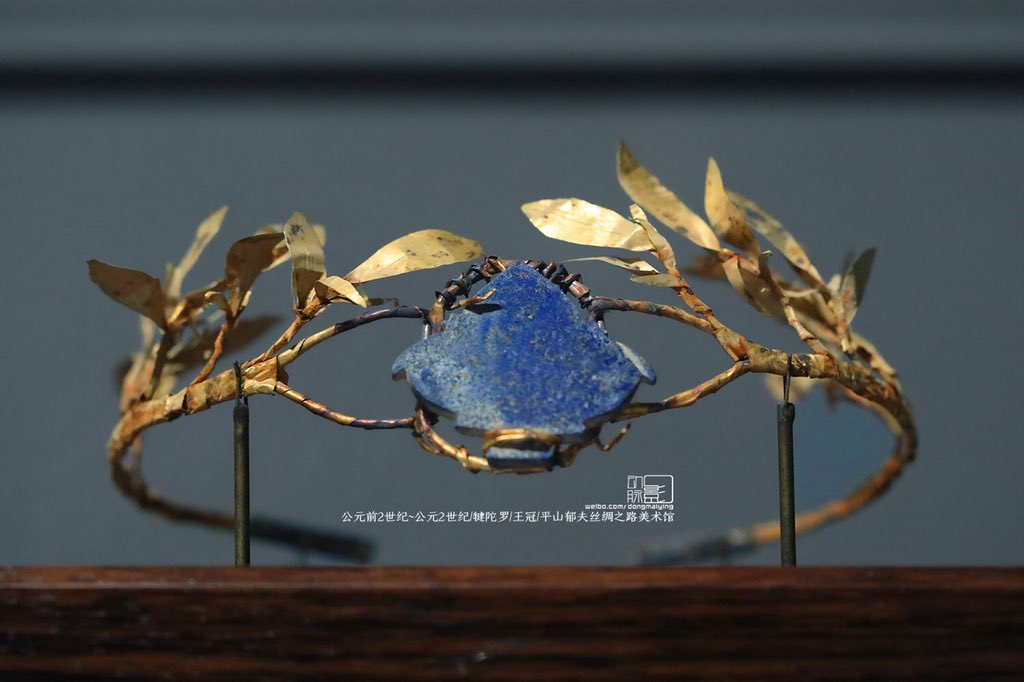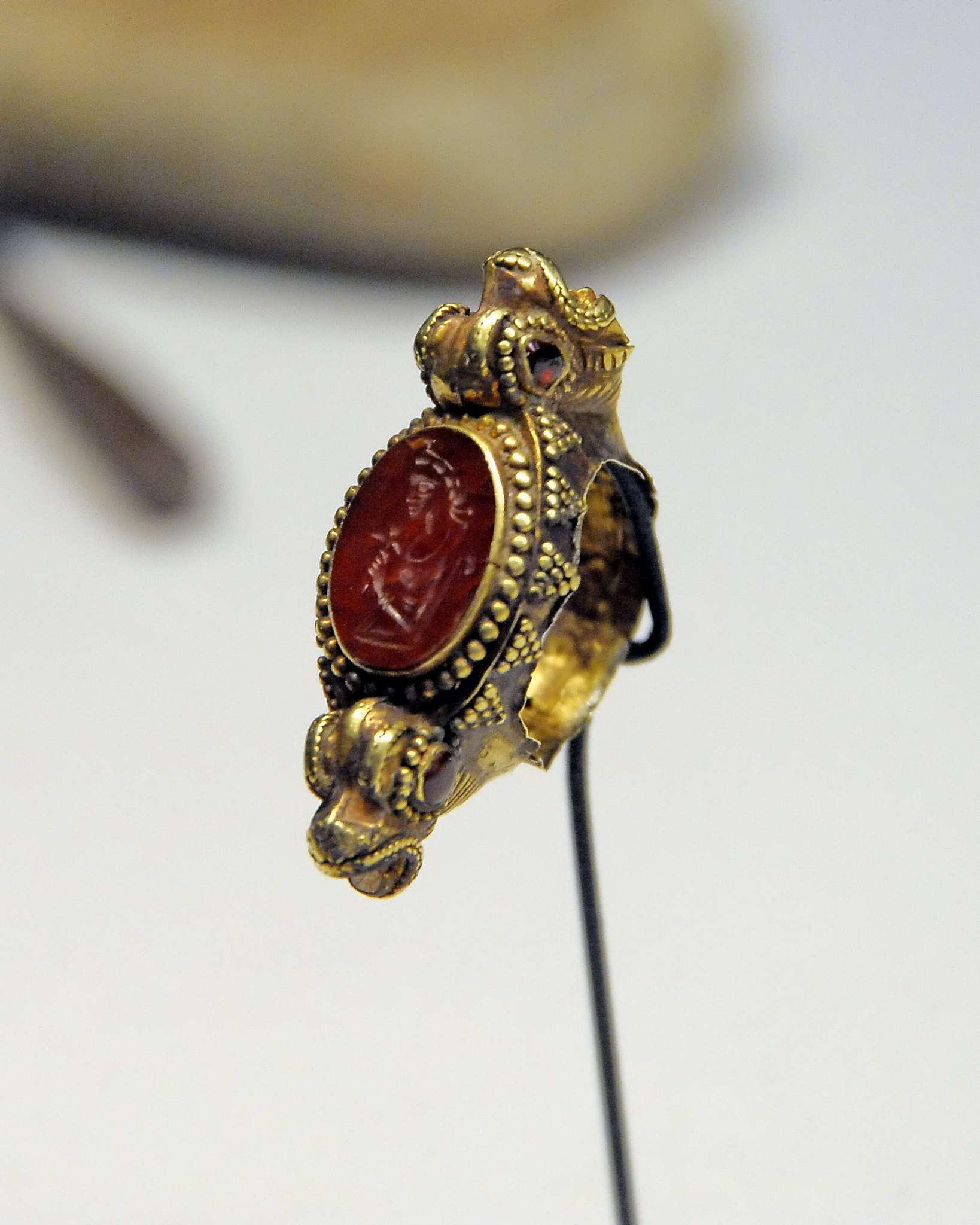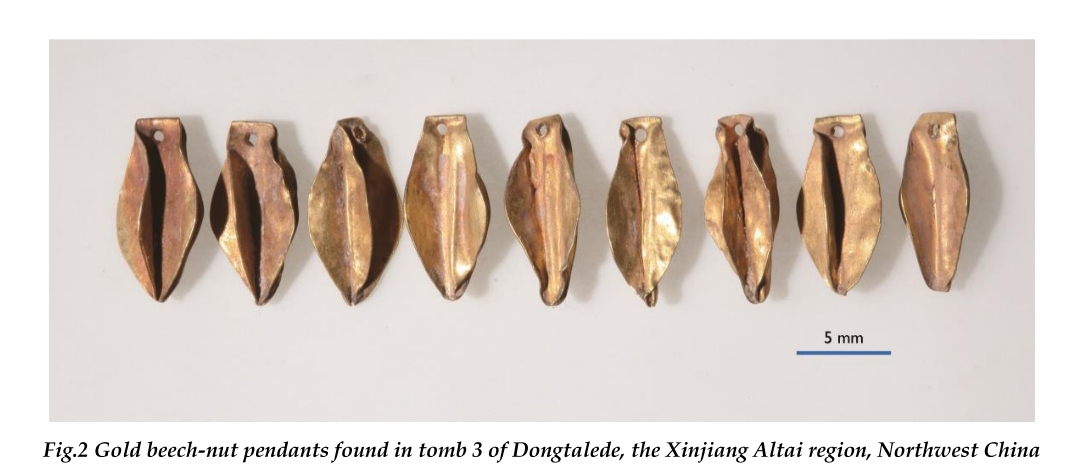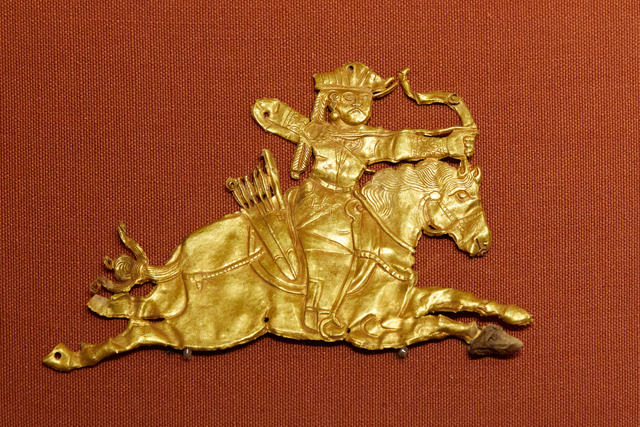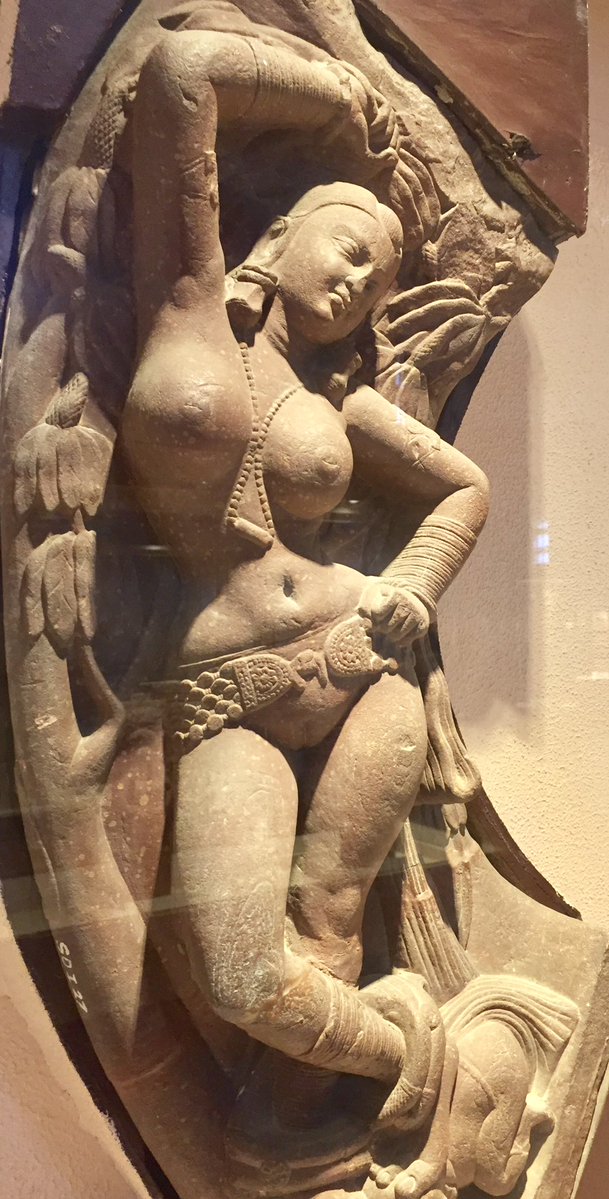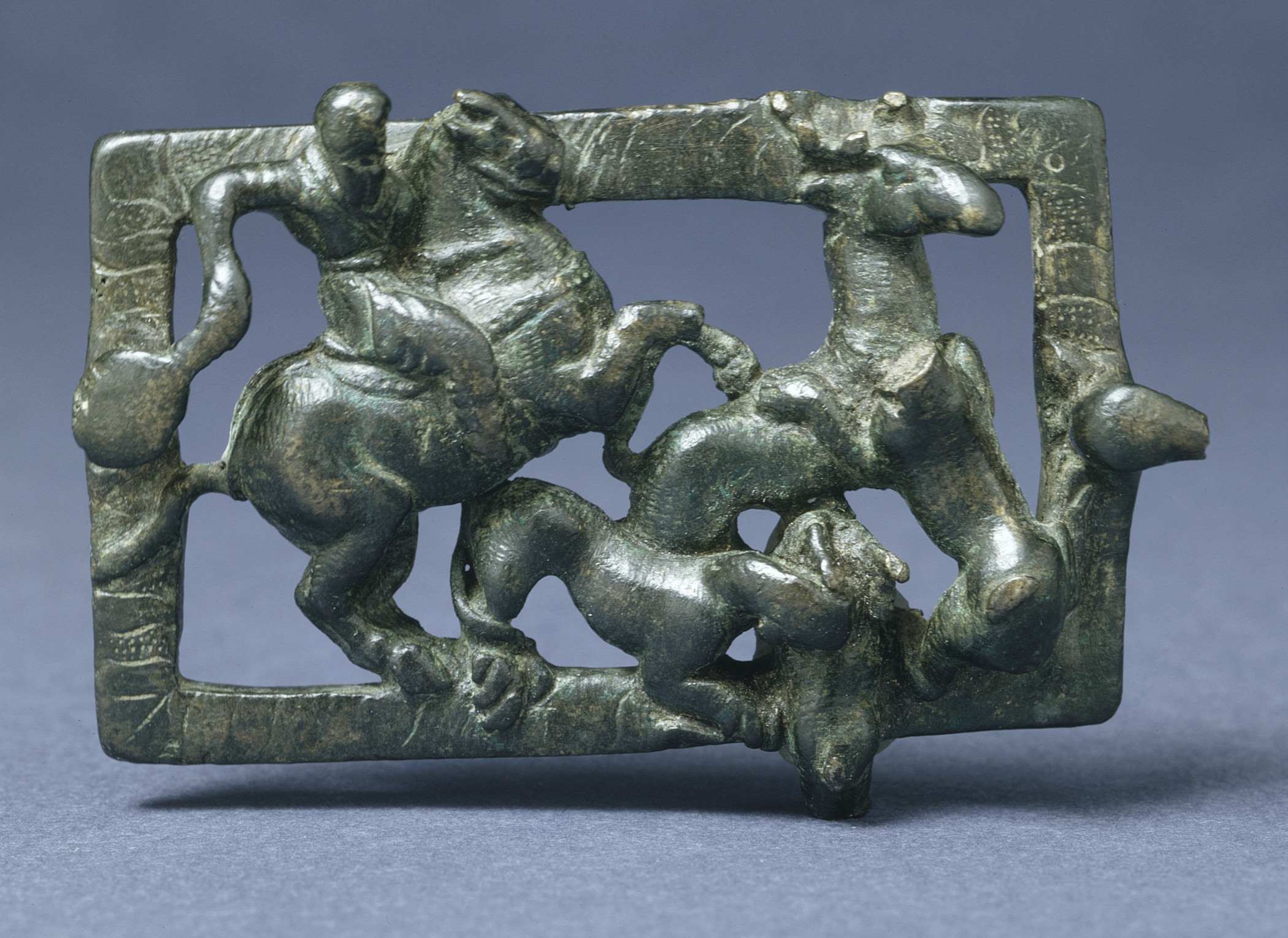

Gold finger ring (44.9 x 28.3 x 18.8 mm) set with a high-domed ruby cabochon bearing two engravings:
a) an “Indus River dolphin”
b) a monogram associated with the Greek king Menander I Soter (150–130 BCE).
Eastern Hellenistic, ca. 2nd century BCE, found by a chance in Ai Khanoum.


Pictures Osmund Bopearachchi
Before the discovery of diamonds in Brazil in the 1720s, most came from India, a few from Borneo. The ring was made by a Greek goldsmith who had travelled as far as what is now Ai Khanoum, a Greeko-Bactrian city in the north of Afghanistan. A pink star ruby, almost certainly from Sri Lanka, is flanked by two small diamond crystals, which are most probably from the Golkonda mine in India. Found in 1999, it is the earliest surviving diamond ring from an archaeological excavation. [Osmund Bopearachchi]

Gold ring with a blue sapphire from Sri Lanka, decorated with acanthus leaves, found by a chance in Ai Khanoum.

Gold finger ring (26.6 x 26.3 x 11.75 mm) set with an irregularly-shaped cabochon, a dark blue sapphire. Gupta or Hephthalite, 4th–6th century CE.

Pair of earrings with the high quality garnets decorated with “Oxus river dolphins”, found by a chance in Ai Khanoum, Afghanistan. [O. B.]

The Begram stupa, 1st-2nd century reliquary decorated at the top with a blue sapphire from Sri Lanka.
For more about the Begram stupa read >>

Inscribed yellow sapphire from India or Sri Lanka, 4th/3rd C BCE
found by a chance in Ai Khanoum [O. B.]
Inscribed in Greek: ΒΑΣΙΛΕΩΣ ΣΕΛΕΥΚΟΥ
“The inscription reads Basileios Seleukou – [Belonging to] King Seleucus. Four separate rulers of the Seleucid Empire were named Seleucus between 305 and 175 ,0, and although it is not possible to determine which Seleucus once owned this gem, Derek Content wrote the following about it:
‘This large and impressive jewel bears all the expected wear patterns of long use. [ . . .] This gem may also be considered one of the earliest named gems in precious stone, the first inscribed true gemstone in a long line of precious gems. Whether engraved in cameo or intaglio, illustrious individuals across ages and cultures frequently have felt the need to immortalize their names in the hardest, most precious material available to them.’“
- Derek J. Content, ‘Ruby, Sapphire & Spinel: An Archaeological, Textual and Cultural Study, Part II’ Brespol Publishers, Turnhout, 2016 http://www.brepols.net/Pages/ShowProduct.aspx?prod_id=IS-9782503568089-1
- Maritime Diffusion of Buddhist thought and Art; Osmund Bopearachchi https://www.academia.edu
video: https://youtu.be/7Bk9Tdo45ZM?t=696 - Ruby, Sapphire & Spinel: an Archaeological, Textual and Cutural Study by Derek Content
Reviewed by Lisbet Thoresen http://www.palagems.com/gem-news-2017-02 - Gemmological Analysis of a Roman Sapphire Intaglio and Its Possible Origin; Michael S. Krzemnicki, Flavio Butini, Enrico Butini and Ernesto De Carolis https://gem-a.com/images/JoG/JOG2019_36_8_Krzemnicki.pdf
- Gemmology in the service of archaeometry http://eurominunion.org/wp-content/uploads/2019/11/9780903056618-09_ricc.pdf
- Archaeogemmology and ancient literary sources on gems and their origins; Lisbet Thoresen https://www.academia.edu
- https://gem-a.com/gem-hub/around-the-world/tag/India



